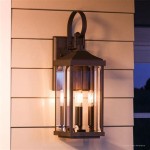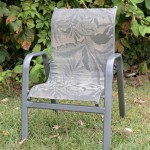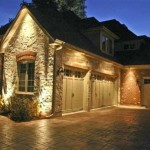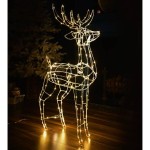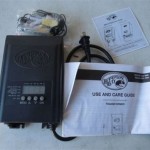Troubleshooting Outdoor Solar Lights That Are Not Working
Outdoor solar lights offer an energy-efficient and aesthetically pleasing way to illuminate gardens, pathways, and patios. They harness sunlight during the day to power themselves at night, eliminating the need for complex wiring and reducing electricity bills. However, these lights can sometimes fail to function as expected. Identifying and addressing the underlying causes of these malfunctions is crucial to maintaining their performance and longevity.
A multitude of factors can contribute to the failure of outdoor solar lights. These reasons range from environmental conditions impacting solar panel efficiency to internal component degradation. By systematically investigating these potential causes, users can often diagnose and resolve the issues, restoring their lights to optimal working condition. This article outlines common problems encountered with solar lights and presents potential solutions for restoration.
Insufficient Sunlight Exposure
One of the most frequent reasons for solar lights failing to illuminate properly is inadequate sunlight exposure. Solar panels depend on direct sunlight to charge their internal batteries. If a light is positioned in a shaded area, under dense tree cover, or behind obstructions like buildings, it may not receive enough sunlight to fully charge the battery during the day. This is especially true during winter months when the sun's angle is lower and daylight hours are shorter.
To rectify this, relocate the solar light to a location that receives at least six to eight hours of direct sunlight per day. Observe the light's position throughout the day to ensure it's not being shaded during peak sunlight hours. If relocation isn't possible, consider trimming back any vegetation that might be blocking the sunlight. Additionally, regularly clean the solar panel surface to remove any accumulated dust, dirt, or debris that could impede light absorption.
Geographic location plays a significant role as well. Regions with consistently cloudy weather patterns will naturally experience reduced solar charging efficiency. In such areas, investing in solar lights with larger solar panels or higher-capacity batteries may prove beneficial. Some advanced models also incorporate light sensors that automatically adjust brightness levels based on battery charge, extending the illumination time even with limited sunlight.
Battery Degradation and Failure
The rechargeable battery is a critical component of any solar light. Over time, these batteries degrade, losing their ability to hold a charge effectively. This degradation is accelerated by factors such as extreme temperatures, overcharging, and deep discharging. Most solar lights utilize Nickel-Cadmium (Ni-Cd), Nickel-Metal Hydride (Ni-MH), or Lithium-ion (Li-ion) batteries, each with varying lifespans and performance characteristics.
A common indicator of battery degradation is a noticeable decrease in the light's brightness or runtime. If the light initially shone brightly for several hours but now dims quickly or only illuminates for a short period, the battery is likely failing. Another symptom is irregular operation, where the light flickers or shuts off intermittently. In these cases, replacing the battery is usually the most effective solution.
When replacing a battery, ensure that the new battery is the correct type and voltage specified by the manufacturer. Using an incompatible battery can damage the solar light and potentially create a safety hazard. It is also advisable to choose a battery with a higher capacity (measured in mAh) to potentially extend the light's runtime. Before installing the new battery, clean the battery contacts within the light fixture to ensure a good electrical connection.
Preventative measures can prolong battery life. Avoid leaving solar lights exposed to extreme heat or cold for extended periods. If possible, store the lights indoors during harsh winter months to prevent battery damage from freezing temperatures. Regular cleaning of the solar panel helps maintain optimal charging efficiency, reducing the strain on the battery.
Malfunctioning Light Sensor or Internal Circuitry
Outdoor solar lights typically incorporate a light sensor that detects ambient light levels and automatically activates the light at dusk. A malfunctioning light sensor can prevent the light from turning on at night, even if the battery is fully charged. This could be due to a faulty sensor, corrosion on the sensor contacts, or damage to the sensor circuitry.
Begin by visually inspecting the light sensor for any signs of damage or corrosion. Clean the sensor lens with a soft cloth to remove any dirt or debris that might be interfering with its operation. If the sensor appears to be physically intact, try testing it by covering the solar panel with your hand in a dimly lit environment. If the light still doesn't activate, the sensor itself may be faulty and require replacement.
In addition to the light sensor, other internal circuitry components can also fail, causing the light to malfunction. These components include the charging circuit, the LED driver, and the wiring connections. Diagnosing these issues typically requires a multimeter and a basic understanding of electronics. Check the voltage output of the solar panel to ensure it's within the specified range. Inspect the wiring connections for any loose or corroded connections.
For users unfamiliar with electronics repair, it may be best to consult a qualified technician or consider replacing the entire solar light. Attempting to repair internal circuitry without proper knowledge or tools can lead to further damage or even electrical shock. When discarding a malfunctioning solar light, be sure to dispose of the battery properly according to local regulations.
Water Infiltration and Corrosion
Outdoor solar lights are exposed to the elements, including rain, snow, and humidity. Over time, water can infiltrate the light housing, causing corrosion and damage to internal components. Corrosion can affect the battery contacts, the wiring connections, and the light sensor, leading to malfunctions or complete failure.
Signs of water infiltration include visible condensation inside the light housing, rust or corrosion on the metal parts, and a damp or musty odor. To prevent water damage, ensure that the light housing is properly sealed and that any drain holes are clear. Regularly inspect the light for cracks or damage and repair them promptly.
If water has already infiltrated the light, disassemble it carefully and dry all the components thoroughly. Use a soft brush to remove any corrosion from the battery contacts and wiring connections. Apply a corrosion inhibitor to protect the metal parts from further damage. Reassemble the light and ensure that the seals are properly aligned.
Consider using silicone sealant around the edges of the solar panel and the light housing to create a watertight barrier. Avoid submerging solar lights in water or exposing them to prolonged periods of heavy rain. Choose solar lights that are specifically designed for outdoor use and have a high IP (Ingress Protection) rating, indicating their resistance to water and dust.
Incorrect Switch Position or Settings
Some solar lights feature an on/off switch or other adjustable settings. If the switch is in the "off" position, the light will obviously not function. Similarly, incorrect settings can affect the light's operation. For example, some lights have a "demo" mode that only allows them to illuminate for a short period.
Always ensure that the switch is in the "on" position and that any other settings are configured correctly. Refer to the light's user manual for instructions on how to adjust the settings. If the light has a motion sensor, make sure it's properly calibrated and that it's not being triggered by unwanted movement, such as swaying branches.
Some solar lights also have a "charge" mode, which disables the light at night to allow the battery to fully charge. This mode is typically used when the light is first installed or after a period of inactivity. Make sure the light is not in "charge" mode when you want it to illuminate.
Regularly check the switch and settings to ensure they haven't been accidentally changed. Children or pets may inadvertently tamper with the controls, affecting the light's operation. Consider using tamper-proof covers or locating the lights in areas that are inaccessible to children and pets.
LED Failure
While LEDs (Light Emitting Diodes) are known for their long lifespan, they can still fail occasionally. An LED failure can manifest as a dim light, a flickering light, or a complete lack of illumination. LED failures are often caused by overheating, overvoltage, or physical damage.
Diagnosing an LED failure requires some knowledge of electronics and the use of a multimeter. If you suspect an LED is failing, carefully inspect it for any signs of damage, such as cracks or discoloration. Use a multimeter to test the voltage across the LED terminals. If the voltage is within the expected range but the LED is not illuminating, the LED is likely faulty and needs to be replaced.
Replacing an LED requires soldering skills and the correct replacement LED. Ensure that the new LED has the same voltage, current, and brightness characteristics as the original. If you are not comfortable with soldering, it may be best to consult a qualified technician or replace the entire solar light.
To prevent LED failures, avoid exposing solar lights to extreme heat or overvoltage. Use a surge protector to protect the lights from voltage spikes. Choose solar lights that are designed with adequate heat dissipation to prevent overheating of the LEDs.
By systematically troubleshooting these potential causes, users can effectively address the reasons behind non-functioning outdoor solar lights and restore them to operational efficiency, thereby maximizing their benefits and lifespan.

6 Common Reasons Why Solar Lights Stop Working Ways To Fix

Top Five Most Common Reasons Outdoor Solar Lights Stop Working Les Jardins Official Site

12 Reasons Why Your Solar Lights Not Working How To Fix

Why Are My Solar Lights Not Working At Night 7 Causes Discover Power

Top Tips For Your Garden Solar Light Batteries Buy A Battery

5 Best Outdoor Solar Lights Of 2024 Reviewed
How Solar Yard Lights Work Howstuffworks

Balhvit Glass Solar Lights Outdoor 8 Pack Super Bright Pathway Up To 12 Hrs Long Last Auto On Off Garden Powered Waterproof Stainless Steel Led Landscape Lighting For Yard

The Best Solar Landscape Lights Of 2024 Popular Science

Best Solar Lights On Test In 2024 Bbc Gardeners World
Related Posts
